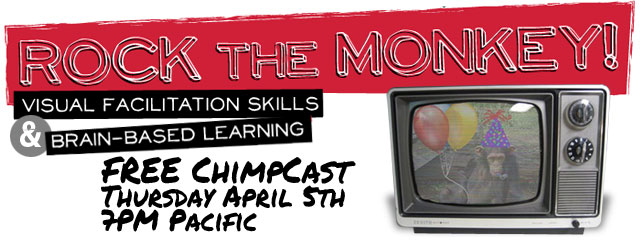 PHOTO: Sita Magnuson
PHOTO: Sita MagnusonMy friend David Owens, a brilliant professor, product innovator and currently CEO for
Griffin Technology Inc., calls it "monkey mind". So do the practitioners of Buddhism (see
Taming the Monkey Mind by Cheng Wei-an).
The Monkey Mind Manual aptly describes the metaphor and dedicates an entire
blog to the subject:
Monkey Mind is a Buddhist term that vividly describes the way our minds stay busy, keeping us away from inner peace and true happiness. I think it is the antithesis of mindfulness. At times I convince myself that my monkey is more agitated and on worse behavior than many: it usually jumps to conclusions, has wild swings of mood, and growls too frequently. Really, though, I'm not alone. Our monkeys are all prone to such behavior.
Monkey Mind is, of course, endemic to human beings of all chemical make-ups. However, it is a serious challenge to kids who brim with the energy and distraction of ADHD--not to mention their parents, teachers, siblings and police officers! Of course, some of us who
like the way we operate wear the label as a badge of honor. (Sort of like
John Belushi's character, in
Animal House who wears a food-stained sweatshirt that simply reads: COLLEGE.)
Those of us with diagnosed (medically or culturally) as living with Attention-Deficit Hyperactivity Disorder (ADHD), or Hyperkinetic Disorder as officially known in the UK, are generally considered to be dealing with a developmental disorder, largely neurological in nature, affecting about 5% of the world's population. Researcher have mapped the disorder to other affects on the brain's development.
Children and teenagers with attention deficit hyperactivity disorder have developmental delays of up to three years in some regions of the brain, U.S. researchers said on Monday. "The sequence in which different parts of the brain matured in the kids with ADHD was exactly the same as in healthy kids. It's just that everything was delayed by a couple of years," said Dr. Philip Shaw National Institutes of Health's National Institute of Mental Health. Shaw said the delays are most pronounced in regions of the brain that are important for controlling thought, attention and planning. ADHD is a condition suffered by about 2 million U.S. children that often becomes apparent in preschool and early school years. Children with ADHD have a tougher time controlling their behavior and paying attention. The finding was based on imaging studies involving 223 children and teens with ADHD and 223 without the disorder.
|
 Alphachimp
Alphachimp  Monday, March 26, 2012 at 11:23AM
Monday, March 26, 2012 at 11:23AM 














 One of the technologies, is a iTunes-like music streamer that uses an algorithm to combine music, words and rhythms.
One of the technologies, is a iTunes-like music streamer that uses an algorithm to combine music, words and rhythms.